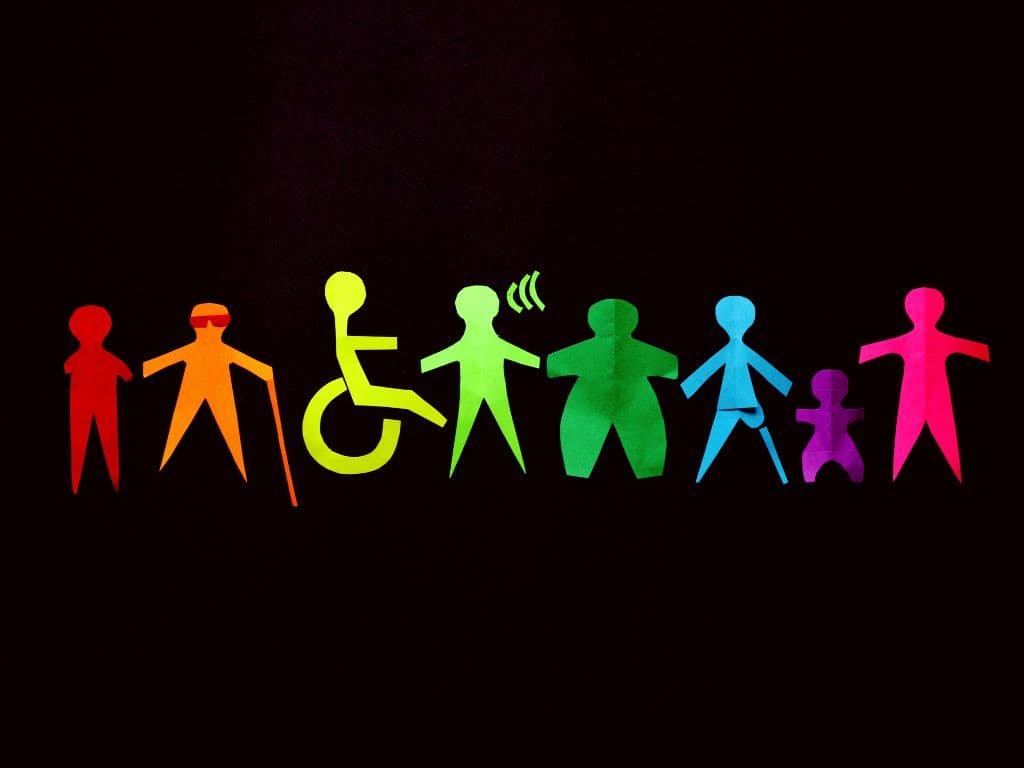What are Major Life Activities Under the ADA?
The Americans with Disabilities Act (ADA) is a civil rights law that prohibits discrimination against individuals with disabilities. A key part of the ADA defines what constitutes a disability. Under the ADA, a disability is defined as a physical or mental impairment that substantially limits one or more major life activities. Major life activities are those basic activities that most people can perform with little or no difficulty.

What are Major Life Activities as Defined by the ADA?
The ADA provides examples of major life activities, including caring for oneself, performing manual tasks, seeing, hearing, eating, sleeping, walking, standing, lifting, bending, speaking, breathing, learning, reading, concentrating, thinking, communicating, and working. These activities are considered major life activities because they are fundamental to most people’s daily lives.
How Breathing, Walking, Talking, and Hearing Constitute Major Life Activities
Breathing, walking, talking, and hearing are all major life activities under the ADA because they are essential human functions that most individuals rely on to live and function independently.
- Breathing is an automatic bodily function, but conditions like asthma or respiratory issues could substantially limit a person’s ability to breathe normally.
- Walking requires the use of one’s legs and feet to move from one place to another, which those with mobility impairments may find challenging.
- Talking and communicating verbally is how most people exchange information. Disabilities affecting speech substantially limit this major life activity.
- Hearing allows people to interpret sounds and language. Individuals who are deaf or hard of hearing have substantial limitations on this major life activity.
How Seeing, Sleeping, Caring for Oneself, and Performing Manual Tasks Constitute Major Life Activities
- Seeing is a critical sense that allows people to interpret visual information and orient themselves. Vision impairments like blindness and low vision interfere with this major life activity.
- Sleeping is essential to human health and functioning. Disorders like insomnia substantially limit the major life activity of sleeping.
- Caring for oneself encompasses hygiene, dressing, feeding oneself, and other activities of personal maintenance. Disabilities can make self-care difficult or impossible without assistance.
- Performing manual tasks involves physical coordination and dexterity. Conditions affecting mobility, motor skills, hands, and arms may substantially limit a person’s ability to do manual tasks independently.
How Learning, Reading, Concentrating, Thinking, Communicating, and Working Constitute Major Life Activities
- Learning, reading, and concentrating are fundamental cognitive functions needed for education, development, and gaining new skills. Disabilities like dyslexia, ADHD, and memory disorders can substantially limit these.
- Thinking entails cognitive processes like judgment, problem-solving, and decision making. Psychiatric and neurological disabilities can interfere with ordinary thinking capacities.
- Communicating includes exchanging information by speech, writing, or gesture. Disabilities affecting communication, speech, and motor functions make this more challenging.
- Working involves performing job duties safely, reliably, and effectively. Chronic illnesses, mobility impairments, PTSD, and other disabilities may substantially limit an individual’s ability to work.
What are Major Bodily Functions as Defined by the ADA?
In addition to listing examples of major life activities, the ADA says major life activities include the operation of major bodily functions. This includes the functions of the immune system, normal cell growth, digestive, bowel, bladder, neurological, brain, respiratory, circulatory, endocrine, and reproductive systems.
How the Functions of the Immune System, Normal Cell Growth, and Digestive System Constitute Major Bodily Functions
- The immune system protects the body from illness and infection. Autoimmune diseases like lupus or HIV/AIDS can substantially limit immune system functioning.
- Normal cell growth is the process by which cells reproduce and regenerate. Cancer and related treatments often impair normal cell function and growth.
- The digestive system breaks down food and absorbs nutrients into the body. Gastrointestinal disorders like Crohn’s disease or celiac substantially limit proper digestion.
How the Functions of the Bowel, Bladder, Neurological System, and Brain Constitute Major Bodily Functions
- The bowel eliminates solid food waste from the body. Bowel disorders like IBS severely affect bowel function.
- The bladder stores and releases urine. Bladder dysfunction substantially limits urine control and release.
- The neurological system and brain control thoughts, movements, senses, and bodily functions. Neurological conditions like epilepsy, ALS, or brain injury impair these major bodily functions.
How the Functions of the Respiratory System, Circulatory System, Endocrine System, and Reproductive System Constitute Major Bodily Functions
- The respiratory system brings air into the lungs for gas exchange. Respiratory diseases like COPD substantially limit breathing and air flow.
- The circulatory system transports blood and nutrients throughout the body. Heart disease, stroke, and other cardiovascular conditions disrupt these functions.
- The endocrine system produces hormones regulating growth, metabolism, and development. Endocrine disorders like diabetes substantially limit hormone levels and function.
- The reproductive system governs sexual and reproductive processes. Reproductive health issues like infertility or menstrual disorders impair reproductive system functions.
What is the Difference Between an Impairment and a Disability?
The ADA makes an important distinction between impairment and disability. An impairment is any loss or abnormality of mental, physical, or anatomical function or structure. However, an impairment alone does not necessarily constitute a disability. To have a disability as defined by the ADA, the impairment must substantially limit a major life activity or major bodily function.
How Does the ADA Define Discrimination?
Discrimination under the ADA refers to treating individuals with disabilities differently or less favorably than people without disabilities. Discrimination also includes failing to make reasonable accommodations to policies and practices to allow equal access and opportunity for those with disabilities.
What is an Accommodation as Defined by the ADA?
The ADA requires covered entities to make reasonable accommodations for people with disabilities. An accommodation refers to any change or adjustment to a job, work environment, policies, or common practices that allows a qualified person with a disability equal access and opportunity to perform essential job functions and enjoy equal benefits and privileges of employment or services.
How Does the ADA Promote Accessibility?
Accessibility focuses on removing barriers that preclude people with disabilities from equally using and enjoying facilities, services, activities, information, and technologies. The ADA advances accessibility by requiring employers, businesses, and services make their facilities, information, and communications accessible through provisions like wheelchair ramps, ASL interpreters, braille signage, assistive listening systems, accessible websites and technology, and more.
How Does the ADA Advocate for Inclusion?
The spirit of the ADA is about promoting equal opportunity, full participation, independent living, and economic self-sufficiency for people with disabilities. It seeks to end isolation and segregation of the disabled by advocating for inclusion – making society accessible so those with disabilities can fully engage in community life. Reasonable accommodations and accessibility measures foster inclusion.
Frequently Asked Questions
-
Who is Lois Curtis?
Lois Curtis, a Black activist for disability and an artist is best-known as the plaintiff in Olmstead Vs. L.C. Supreme Court Case that established the independence of persons with disabilities. Curtis was diagnosed as having cognitive impairments when he was a child.
-
What are major life activities under the ADA?
These regulations give examples of the major activities of daily life: caregiving, caring for yourself, working with others, seeing and hearing, moving, standing up, sitting down, reaching out, lifting, speaking, talking, breathing, learning, reading comprehension, communicating, interfacing
-
Who qualifies for direct payments?
If you have been assessed under the personal and health services legislation, direct payments will normally be available. You have to be 16 years old or older if you are suffering from a disability.
-
Who wrote the Olmstead decision?
Ruth Bader Ginsburg is the majority opinion No. No.
-
Can you be too mentally ill to work?
The ADA protects you if your mental condition, if untreated, interferes with the ability of you to work or live at home. With or without reasonable accommodation (such as flexible work hours), you can still perform essential functions in the job that you are applying for.
-
What does Olmstead stand for?
Olmstead or Olmstead v. LC is the name for the greatest civil rights decision in the history of our country. The Americans with Disabilities Act was the basis of this 1999 United States Supreme Court ruling.
-
What is a housing support plan?
The support plan is a great way for front-line workers and service users to collaborate in order to create, review and revise the relationship in which they will interact. This can help clarify the expectations for all involved in supported housing.
-
Does living alone affect mental health?
Living alone may increase our chances of having mental problems. Those who live alone are more likely to experience anxiety and less happiness than those who live with children.
-
What are HOA fees at The Villages?
There is no HOA in the Villages. In fact, there aren’t any HOA fees. Residents pay CDD fees. According to The Villages the average CDD assessment (including maintenance fees and bonds) is $129 per month.
-
What is considered low income in Florida?
The federal poverty level for Florida is $13,590 per person as of 2022. HealthCare reports that this number rises by $4720 per family member. This makes $27750 the federal poverty level for a family with four members. gov.
-
Is Olmstead still good law?
Olmstead was found guilty and appealed to the Supreme Court. He argued that wiretapping violated his Fourth Amendment rights, which allow him to avoid unreasonable search or seizure. The Supreme Court ruled that warrantless wiretapping is permissible on June 4, 1928 in a verdict of 5-4.
-
What is independent living philosophy based on?
Independent Living (IL), is a philosophy that assumes people with disabilities have equal civil rights and options.
-
What is a residential placement for adults?
Adult placement (AP), which offers individuals (predominantly people with learning disabilities, but also people with mental illness problems), an alternative form of accommodation that is highly flexible and individual-centred. It is offered by adult placement carers, who are ordinary people or their families.
-
Who qualifies for carers support Grant?
If you’re a caregiver, you can apply for one-off carer grants. Provide’substantial care* or support for the person being cared for, 18 years old and over. You have not consented to a Carers Assessment **
-
How much can I earn while on supported living payment?
Your benefit will not be affected if you earn up to $8320 per year (before taxes). The $8,320 limit applies to both your earnings and the combined earnings of any partner. Any income that you earn outside of Work or Income could affect the financial assistance you receive.





